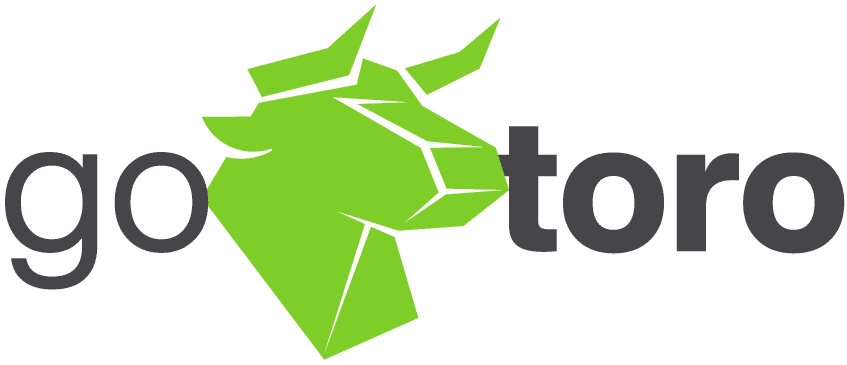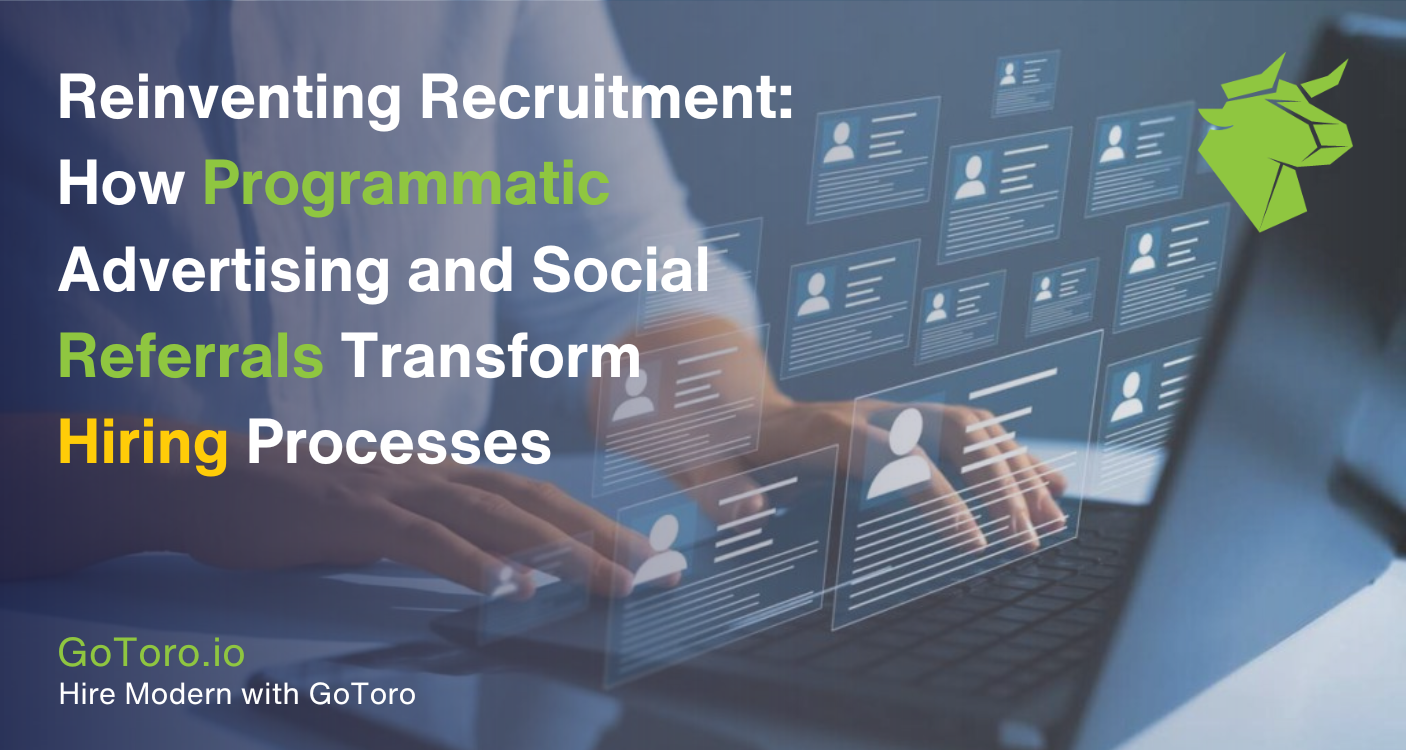Recruitment, a critical aspect of organizational success, has long faced challenges that hinder the efficient discovery and engagement of top talent. Traditional recruitment methods, while foundational, often fall short in addressing the dynamic needs of the modern job market. These methods, characterized by manual job postings, extensive networking, and reliance on job boards, can be time-consuming, costly, and limited in scope. In response to these challenges, innovative solutions like programmatic advertising and social referrals have emerged, revolutionizing the hiring process. Programmatic advertising, with its data-driven approach, automates and optimizes job ad placements across the web, targeting the most qualified candidates. Social referrals leverage the expansive networks of social media, transforming every user into a potential recruiter. Together, they present a formidable duo, redefining recruitment strategies to meet the efficiency and scale required in today’s competitive landscape.
The Evolution of Recruitment Strategies

Traditional Recruitment Methods: Pros and Cons
Traditional recruitment has always been the bedrock of hiring processes. Methods such as posting vacancies on job boards, utilizing recruitment agencies, and relying on internal networks have dominated the field. The primary advantage of these methods lies in their simplicity and directness. They are well-understood, easy to implement, and provide a straightforward path to engaging with potential candidates. However, the cons are becoming increasingly apparent. These methods often lead to a high volume of unqualified applicants, making the screening process arduous and time-consuming. Furthermore, they lack the dynamic targeting capabilities needed to reach passive candidates who are not actively job hunting but are open to the right opportunities. The cost-effectiveness of traditional methods is also in question, as the expenses associated with job boards and agencies can accumulate quickly, without guaranteeing successful hires.
Emergence of Programmatic Advertising in Recruitment
Programmatic advertising has emerged as a game-changer in recruitment, offering a solution that overcomes many of the limitations of traditional methods. At its core, programmatic advertising involves the use of AI and machine learning algorithms to buy, place, and optimize job ads automatically across the internet. This approach ensures that job ads are shown to the most relevant audience, based on a variety of factors including job seekers’ online behaviors, interests, and search activities.
The emergence of programmatic advertising in recruitment brings several key advantages. Firstly, it dramatically increases the efficiency of ad spend by targeting only those most likely to be interested in the job, reducing waste and improving ROI. Secondly, it allows for real-time optimization of campaigns, meaning ads can be adjusted on the fly based on performance metrics, ensuring the best possible results. Finally, programmatic advertising has the potential to reach passive candidates through targeted ads on websites they frequently visit, making it a powerful tool for engaging high-quality talent who are not actively looking for new opportunities but are open to the right offer.
By addressing the inefficiencies of traditional recruitment methods, programmatic advertising stands as a pillar of modern recruitment strategies. Its data-driven nature and ability to automate and optimize the recruitment advertising process align perfectly with the needs of today’s fast-paced job market, heralding a new era of efficiency and effectiveness in attracting top talent.
I. The Evolution of Recruitment Strategies
The Rise of Social Referrals
Understanding Social Referrals in the Context of Recruitment
Social referrals in recruitment refer to the practice of using social networks and platforms to facilitate job referrals. This method leverages the personal and professional networks of an organization’s employees, stakeholders, and even its wider community to identify and attract potential candidates. The process typically involves employees sharing job postings within their social media circles, along with a personal endorsement or a direct invitation to apply. Social referrals harness the power of social connectivity, turning every member of a network into a potential recruiter.
Benefits of Leveraging Social Media for Job Referrals
Leveraging social media for job referrals, or social referrals, offers significant advantages over traditional recruitment methods. It taps into the vast, interconnected web of social networks, providing access to a broader and more diverse talent pool. Social referrals increase the likelihood of reaching passive candidates who may not actively search job boards but are open to new opportunities presented by trusted connections. Additionally, candidates sourced through social referrals often come with implicit endorsements, potentially reducing the time and resources spent on vetting candidates. The personal nature of social referrals also enhances the candidate’s engagement and interest in the role, as the opportunity is presented through a familiar and trusted source.
II. How Programmatic Advertising and Social Referrals Complement Each Other
Integration of Data-Driven Approaches and Personal Connections
The integration of programmatic advertising’s data-driven approach with the personal touch of social referrals creates a comprehensive recruitment strategy. Programmatic advertising ensures that job ads are seen by the right eyes, using sophisticated algorithms to target candidates based on behavior and preferences. When these targeted individuals encounter job opportunities through social referrals from within their networks, the message is personalized and carries more weight, significantly enhancing engagement and response rates.
Enhancing Reach and Engagement Through Combined Strategies
Expanding the Talent Pool
By combining programmatic advertising with social referrals, organizations can significantly expand their talent pool. Programmatic advertising extends reach across the digital landscape, capturing the attention of active and passive candidates. When these efforts are supplemented with social referrals, the job opportunity permeates through various layers of social networks, tapping into a reservoir of talent that may be inaccessible through traditional or singular approaches.
Targeting Ideal Candidates More Effectively
This combination also allows for more effective targeting of ideal candidates. Programmatic advertising can hone in on candidates with specific skills, experiences, and behaviors. When these targeted ads are coupled with social referrals, the endorsement from a known connection adds a layer of trust and personal appeal, making the opportunity more enticing. This dual approach ensures that job openings are not just seen but are seen by the right candidates and are given consideration they might not receive through other means.
III. Leveraging Social Media for Effective Recruitment

Identifying the Right Platforms for Different Roles
Choosing the right social media platforms is crucial for maximizing the impact of social referrals. Different platforms cater to various professional and demographic groups. LinkedIn, for example, is ideal for corporate roles and professional networking. Instagram and TikTok may be better for creative positions or companies targeting younger demographics. Identifying where your target candidates spend their time online can significantly increase the effectiveness of your recruitment efforts.
Building an Employer Brand on Social Media
Content Strategies
Developing a strong content strategy enhances your employer brand. Share stories that reflect your company culture, employee testimonials, and behind-the-scenes looks into your work environment. Highlight achievements, community involvement, and events. Authentic content resonates with potential candidates and encourages current employees to share your posts, amplifying your reach through social referrals.
Engagement Tactics
Engagement on social media isn’t just about posting content; it’s about creating conversations. Respond to comments, participate in relevant discussions, and create interactive content like polls or Q&A sessions. Engaged followers are more likely to share your content and refer others to your company.
Incentivizing Social Referrals

Encouraging widespread participation in social referrals goes beyond the company’s employees. By offering incentives to all users on social media who share job openings, you can dramatically increase your reach. These incentives might include entries into giveaways, discounts on products or services, or even charitable donations made in their name for every referral that leads to a hire. The key is to align these incentives with your audience’s interests and values, making them compelling enough for people to want to share your openings within their networks.
Facilitating Effective Referral Sharing for All
To empower everyone—not just employees—to share job openings effectively, provide accessible and easy-to-use sharing tools. This approach could involve creating a dedicated referral platform or simply offering shareable links and social media-friendly graphics that highlight your company’s culture and the open positions. Additionally, offering brief guidelines or tips on how to make referrals more personal and engaging can help boost the quality and effectiveness of these shares. By making it straightforward and rewarding for anyone to share job openings, you tap into the power of social media’s extensive reach, significantly enhancing your recruitment efforts through social referrals.
By strategically leveraging social media and empowering employees as brand ambassadors, companies can significantly enhance their recruitment efforts. Social referrals become a powerful tool in attracting and hiring the right talent.
III. Programmatic Advertising as a Complete Turn-Key Solution for Recruitment Advertising
Automating the Recruitment Marketing Process
Setting Up Campaigns
Programmatic advertising simplifies the setup of recruitment campaigns by automating the distribution of job ads across various platforms. This system uses algorithms to place ads in front of the right candidates, ensuring efficiency and reach. By selecting specific criteria related to the target audience, recruiters can launch campaigns that are highly tailored to the roles they need to fill.
Managing and Optimizing Ads in Real Time
The power of programmatic advertising lies in its ability to manage and optimize ads in real time. Algorithms analyze the performance of each ad, making adjustments to bidding strategies, placement, and targeting to maximize engagement and response rates. This dynamic approach ensures that recruitment efforts are continuously refined for optimal results.
Measuring Success Through Analytics
Key Performance Indicators (KPIs) for Recruitment Advertising
Success in recruitment advertising is measured by key performance indicators (KPIs) such as click-through rates (CTR), conversion rates, cost per hire, and time to fill. These metrics offer insights into the effectiveness of the ads and the efficiency of the recruitment process, guiding strategic decisions.
Adjusting Strategies Based on Data Insights
The insights gathered from analytics allow recruiters to adjust their strategies for better outcomes. By understanding which platforms, ad formats, and messages resonate most with the target audience, recruiters can fine-tune their approaches to improve performance and reduce costs.
IV. Integrating Social Referrals into Programmatic Campaigns
Strategies for Seamless Integration
Integrating social referrals into programmatic campaigns creates a powerful synergy. One strategy is to use programmatic ads to drive traffic to a landing page that encourages social sharing of job opportunities. Additionally, incorporating social sharing buttons directly within job ads and leveraging programmatic technology to track referrals can streamline the process.
Leveraging Technology for Effective Referral Programs
Technology plays a crucial role in enhancing social referral programs. By utilizing referral tracking software, companies can identify which social platforms and users are generating the most referrals and hires. This data can then inform future programmatic campaigns, enabling recruiters to target similar audiences and incentivize high-performing referrers. Combining the precision of programmatic advertising with the personal touch of social referrals creates a comprehensive and effective recruitment strategy.

Combining programmatic advertising with social referrals transforms recruitment, making it more efficient and tailored. This approach is the future of hiring, blending data accuracy with personal touches. For a competitive edge in talent acquisition, request a demo from Gotoro to see how this synergy can work for you.


